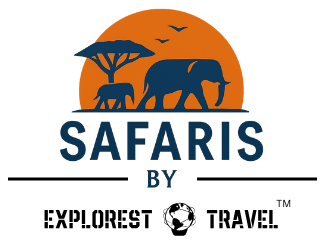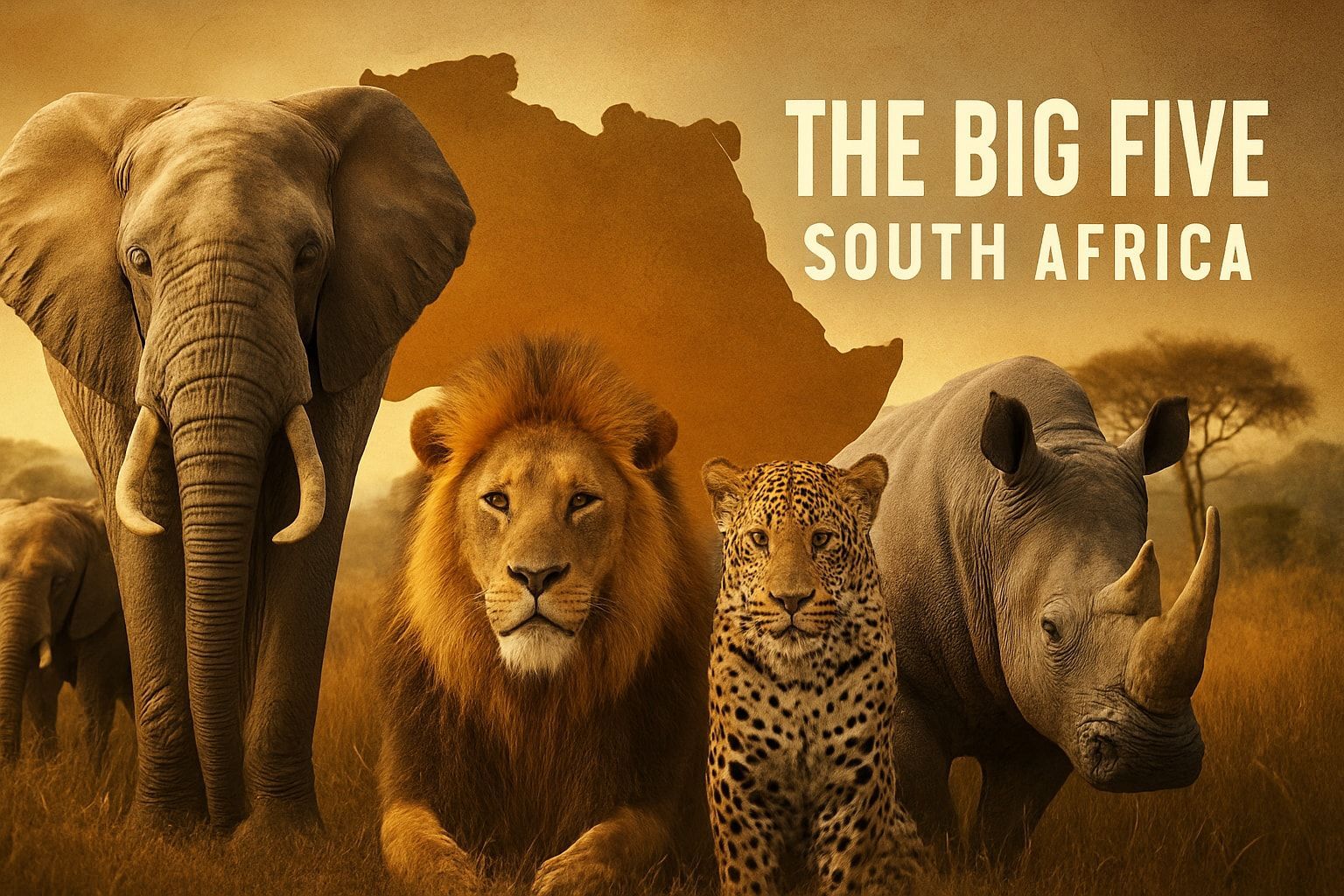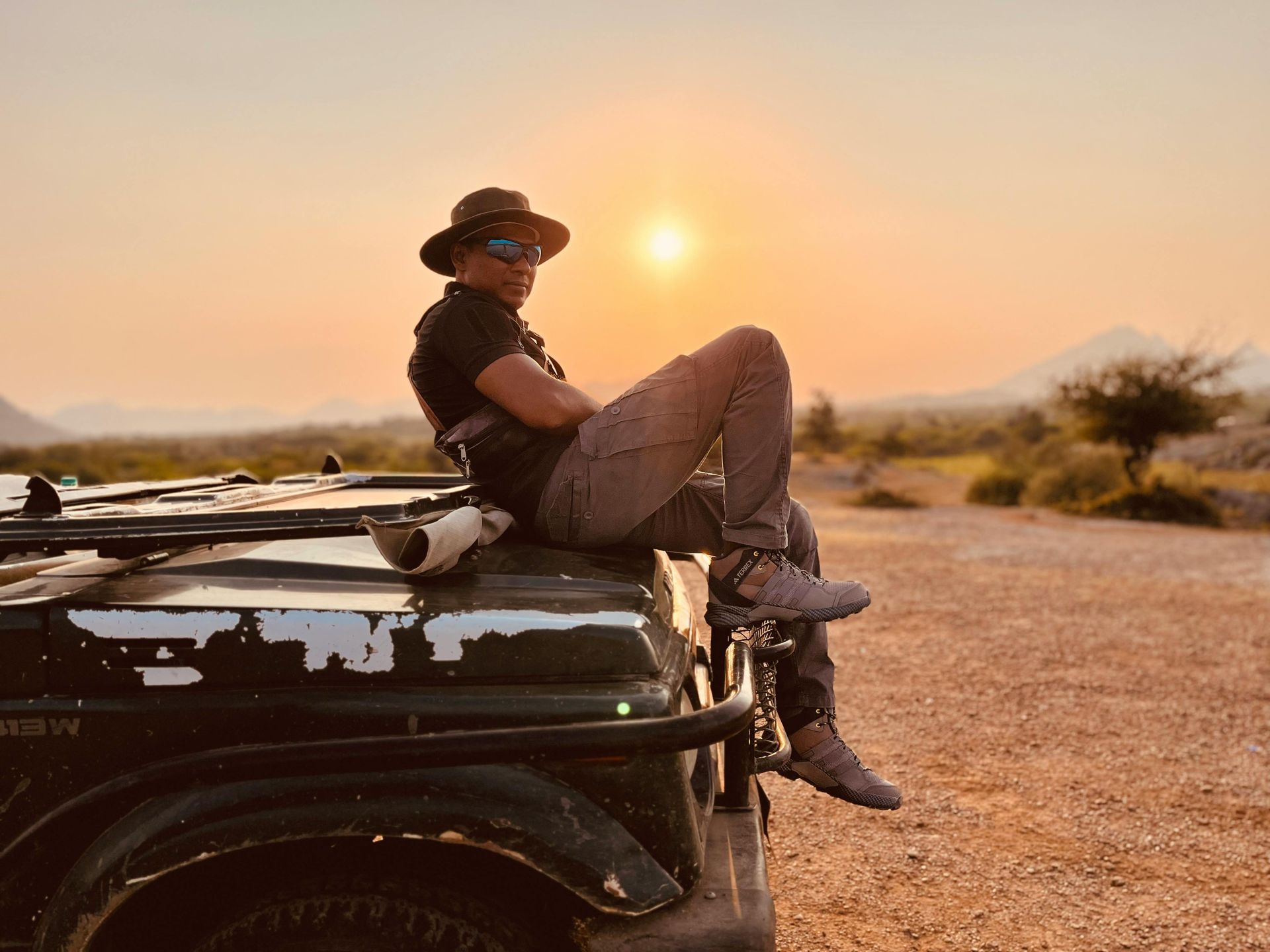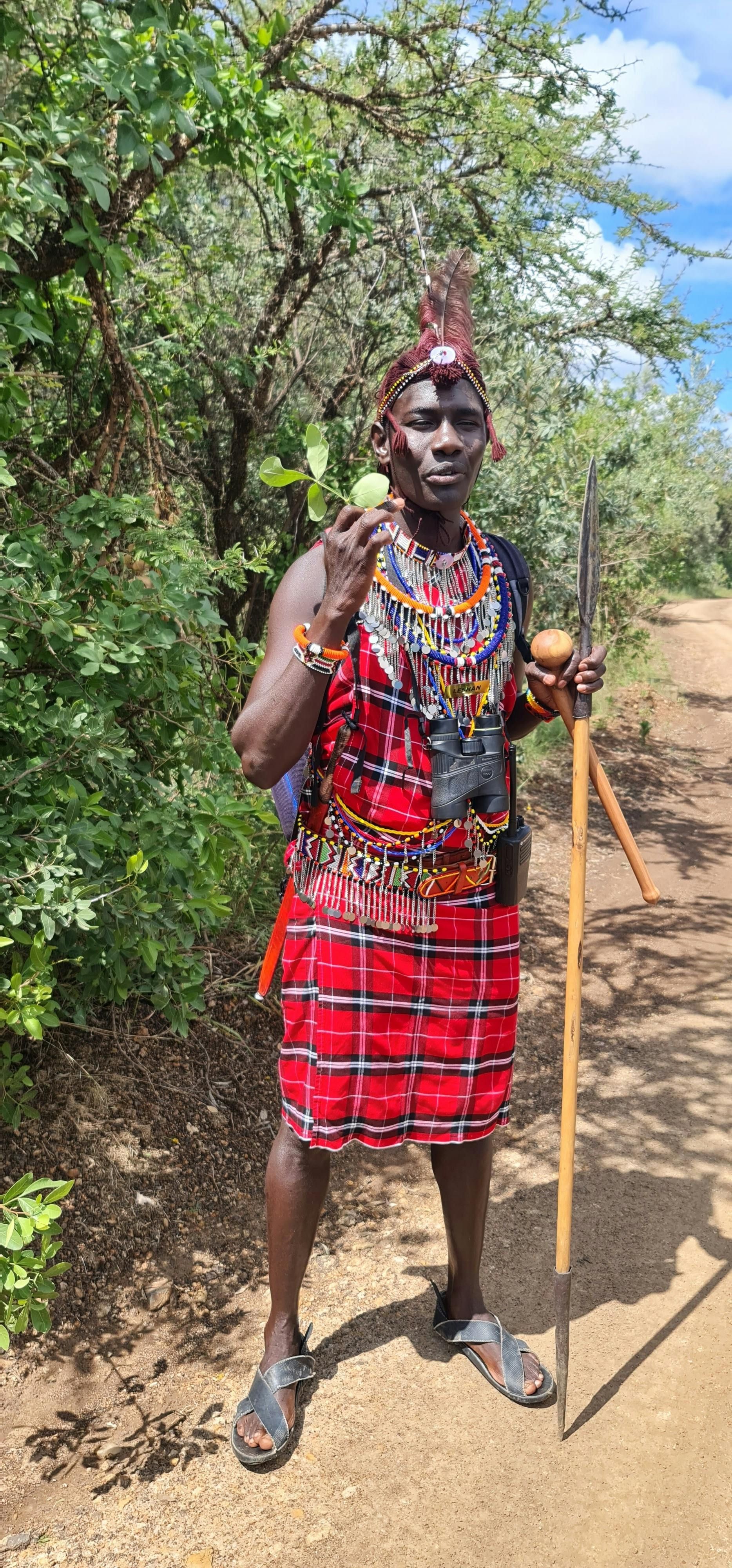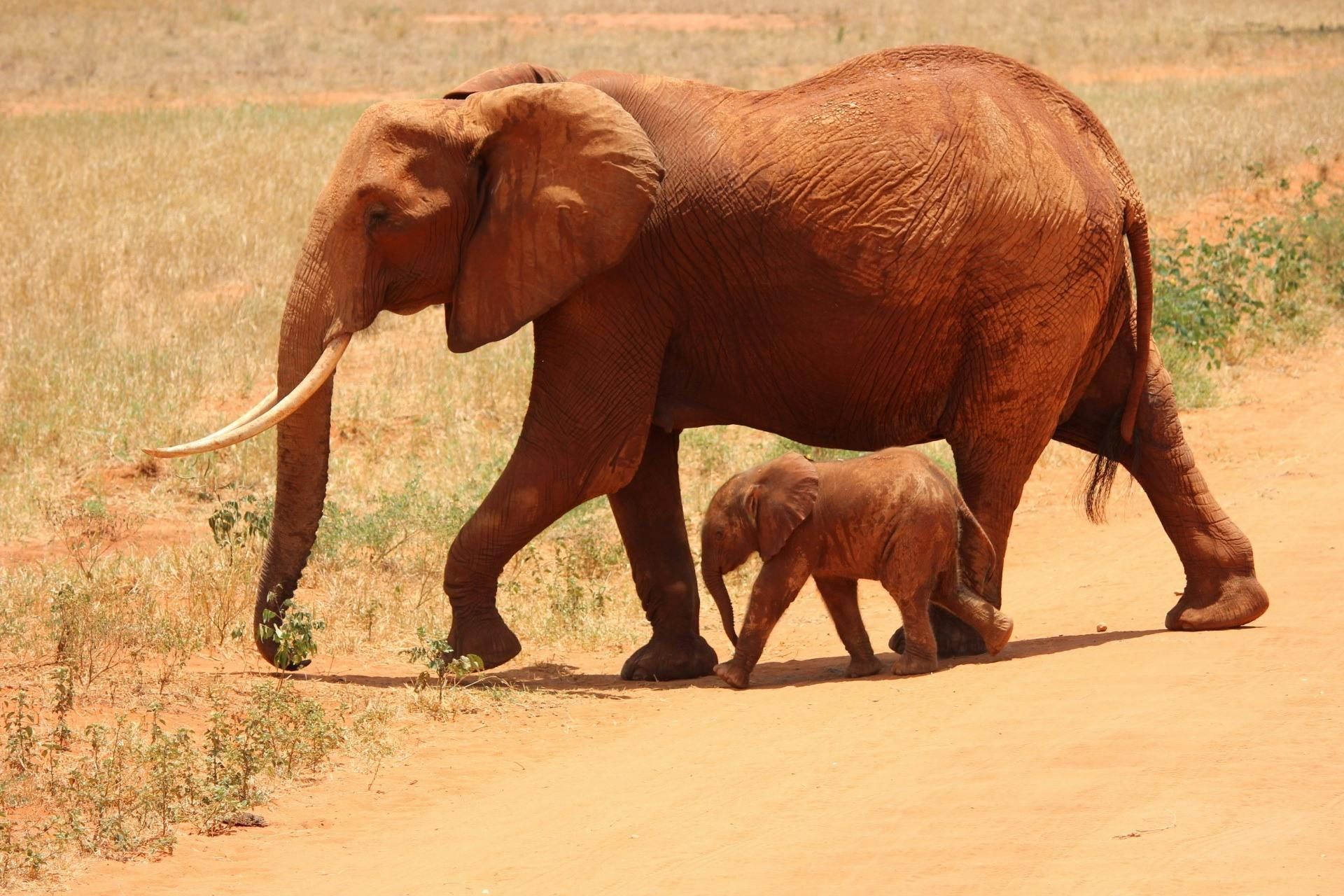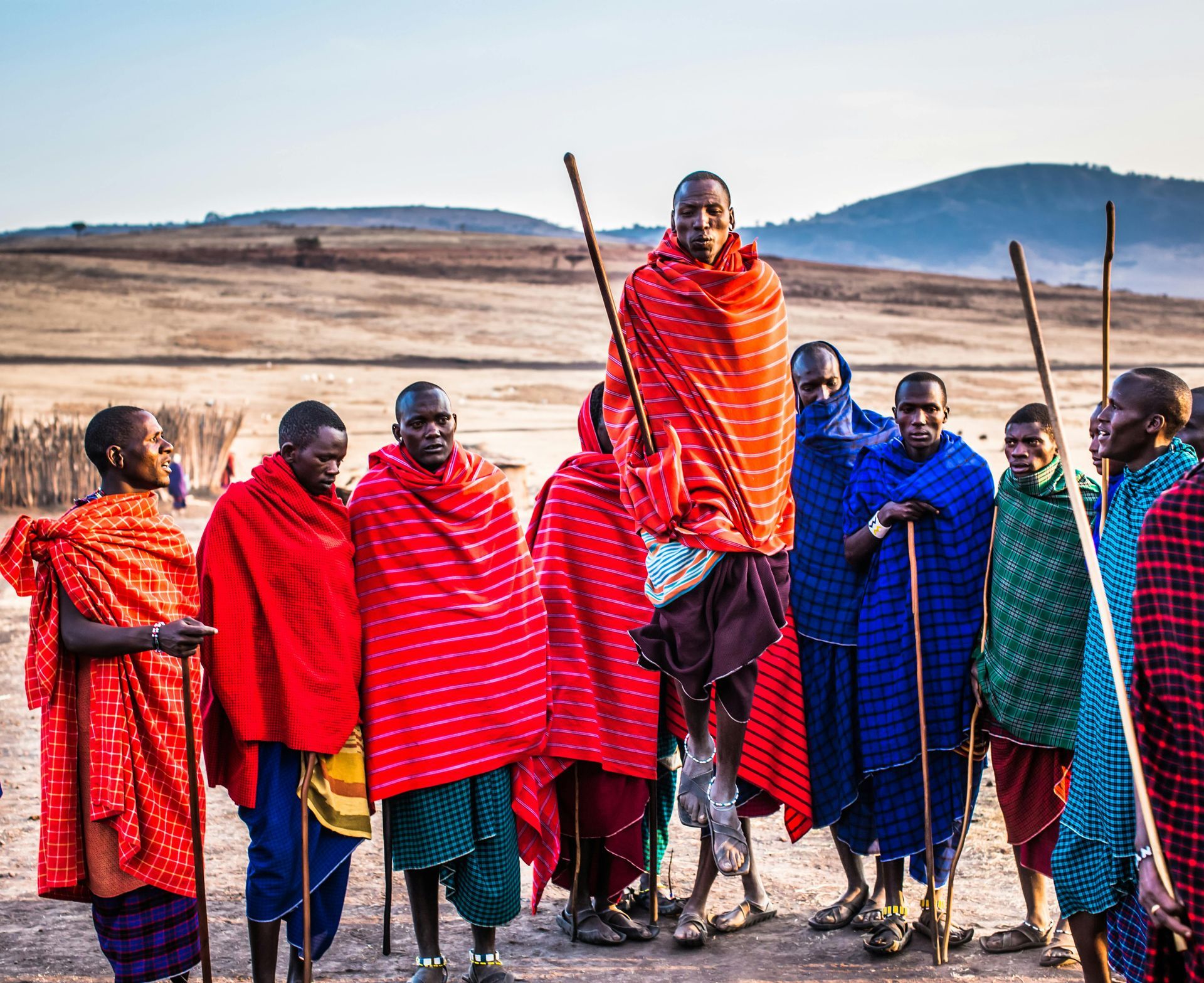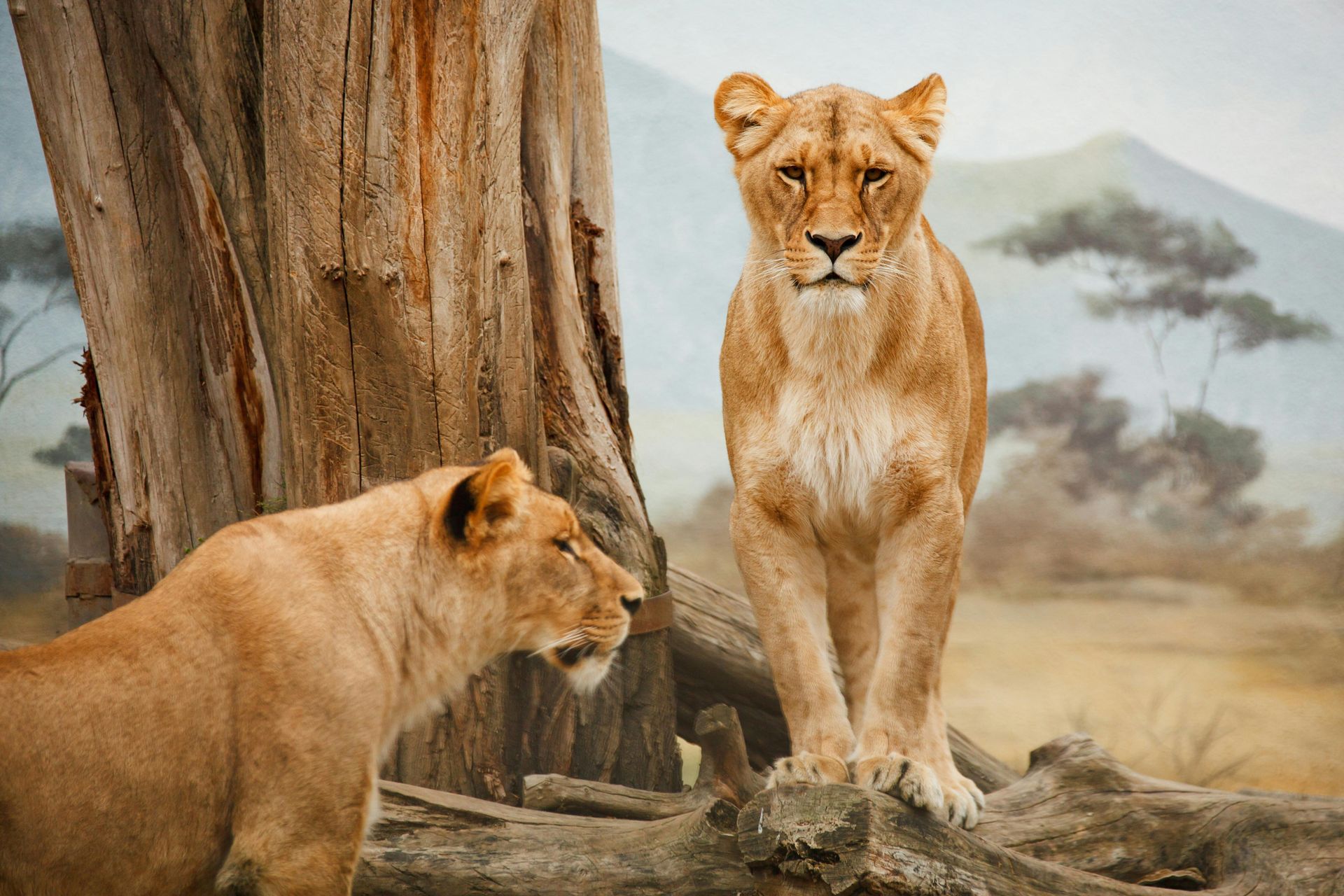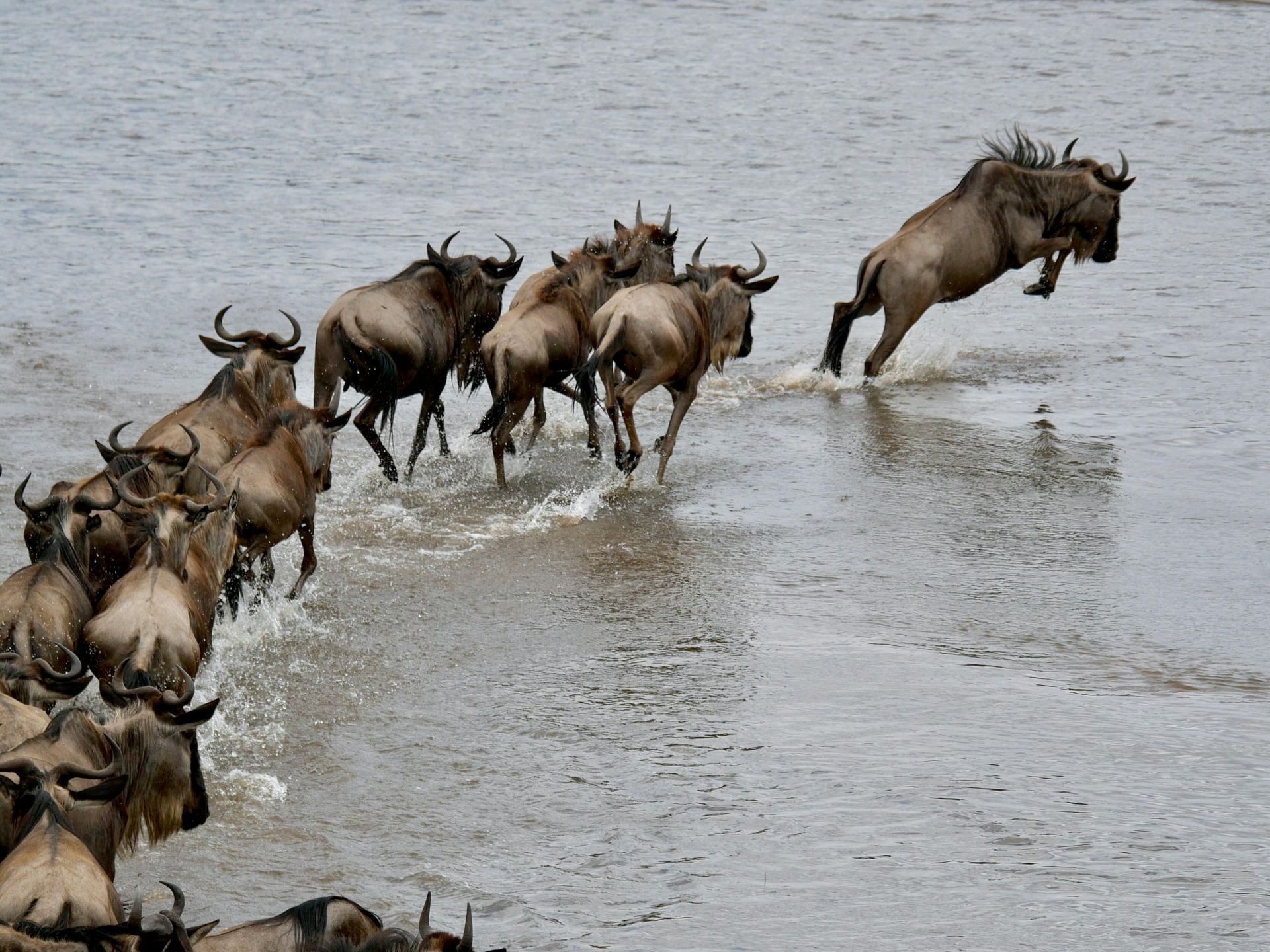Serengeti National Park Africa Guide: Explore Like a Pro 2025
Picture yourself on the golden plains as the first rays of sunlight touch serengeti national park africa, while a lion’s roar stirs the morning air. This guide will help you unlock the secrets of the Serengeti for a truly unforgettable experience in 2025.
Discover the park’s breathtaking highlights, learn when and where to witness incredible wildlife moments, and find practical tips for seamless travel. With expert advice, sustainable travel insights, and insider recommendations, you’ll be ready to explore like a pro. Start planning your adventure today—your journey begins here.
Serengeti National Park Overview: History, Geography & Ecosystems
Standing at the heart of serengeti national park africa, you are surrounded by a living tapestry of history, wild beauty, and ecological wonder. This iconic destination has evolved over decades, becoming a global symbol of Africa’s natural heritage. Understanding its past, geography, and ecosystems is essential for any traveler seeking an authentic experience.

The Birth and Evolution of Serengeti National Park
Serengeti national park africa was formally established in 1951 to protect one of the world’s last great wildlife spectacles. The park’s name comes from the Maasai word “Siringet,” meaning “endless plains,” a fitting tribute to its sweeping landscapes.
In 1981, the Serengeti was recognized as a UNESCO World Heritage Site, affirming its global significance. Over the years, the park expanded through key conservation milestones, including the creation of buffer zones and wildlife corridors. These efforts have helped preserve the region’s delicate balance between people, wildlife, and environment.
Geography and Major Regions
Spanning 14,750 square kilometers across northern Tanzania, serengeti national park africa features an astonishing variety of landscapes. The Central Seronera region is renowned for year-round wildlife and lush riverine forests. The Western Corridor follows the Grumeti River, famous for dramatic crossings during migration. Northern Lobo offers remote woodlands and open savannas, while the Southern Plains host the vast calving grounds.
Here’s a comparison of major regions:
| Region | Key Features | Best Time to Visit |
|---|---|---|
| Central Seronera | Year-round wildlife, kopjes | All year |
| Western Corridor | River crossings, forested | May–July |
| Northern Lobo | Remote, fewer crowds | July–October |
| Southern Plains | Calving season, open grassland | December–March |
Each area contributes to the park’s remarkable biodiversity.
Unique Ecosystems and Biodiversity
The rich ecosystems of serengeti national park africa support over 500 bird species and more than 70 large mammal species. Iconic residents include lions, elephants, wildebeest, cheetahs, leopards, and giraffes. Endemic flora and fauna thrive in the park’s grasslands, woodlands, and riverine habitats.
For a comprehensive look at the park’s size, diverse ecosystems, and the awe-inspiring Great Migration, explore Serengeti's Ecosystem and Wildlife. This incredible diversity makes every safari unique and unforgettable.
The Serengeti’s Role in the Greater Mara-Serengeti Ecosystem
Serengeti national park africa forms the core of the larger Mara-Serengeti ecosystem, which stretches across the Tanzania-Kenya border. The seamless connection to Kenya’s Maasai Mara Reserve is vital for the annual migration of wildebeest, zebras, and gazelles.
This cross-border movement sustains predator-prey dynamics and ensures genetic diversity among key species. The Serengeti’s role in this ecosystem is fundamental to the survival of many migratory and resident animals, making it a living laboratory for natural processes.
Conservation Challenges and Successes
Protecting serengeti national park africa has required innovative conservation strategies. Anti-poaching patrols, advanced wildlife monitoring, and community partnerships have curbed illegal activities and supported population recoveries for species like elephants and rhinos.
Local communities play an active role, from guiding eco-tourism to participating in habitat restoration. Notable success stories include the resurgence of cheetah and elephant populations, demonstrating the park’s ability to adapt and thrive amid challenges. Ongoing collaboration and vigilance are essential to ensure the Serengeti’s legacy endures for future generations.
When to Visit: Seasons, Weather & The Great Migration
Standing on the sweeping savannas of serengeti national park africa, the changing light and rhythm of the land tell a story of seasons unlike anywhere else. Knowing when to visit can make the difference between a good safari and an unforgettable adventure. Whether you are tracking the Great Migration or seeking rare birds, timing is everything.
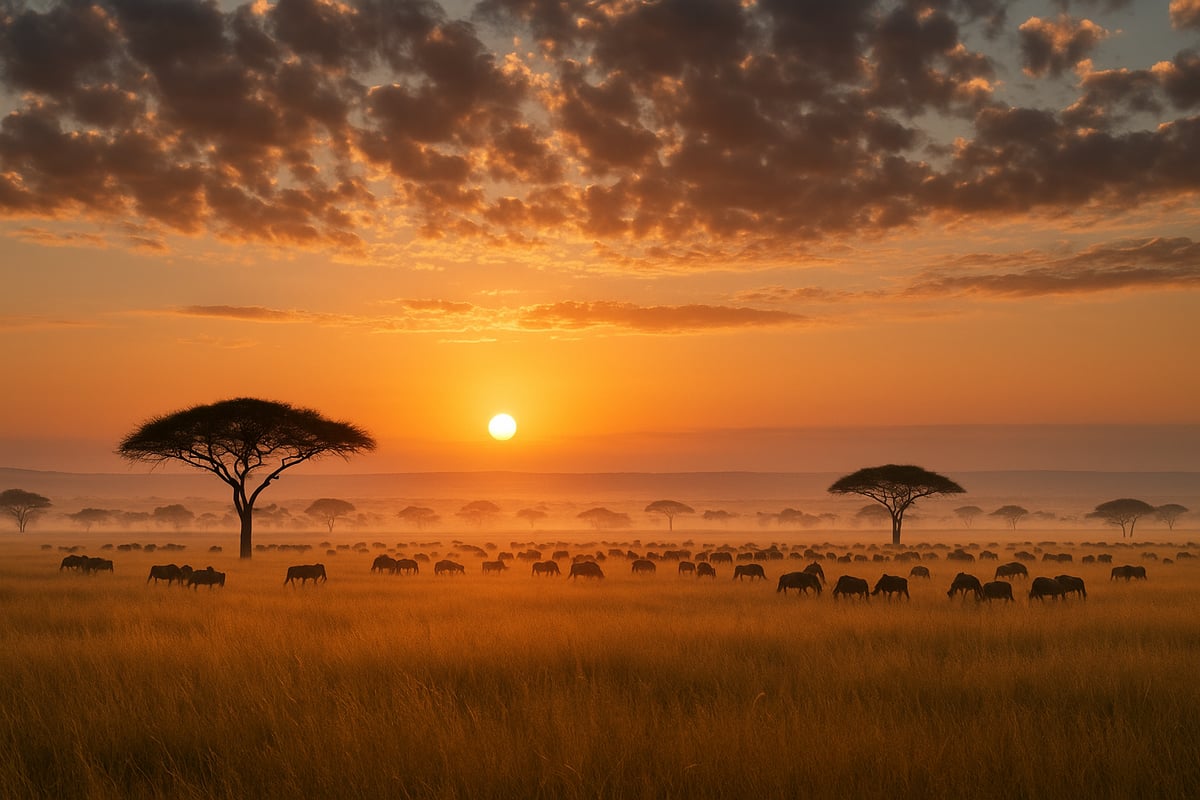
Understanding Serengeti’s Climate and Seasons
Serengeti national park africa experiences two distinct seasons: the dry season from June to October and the wet season from November to May. During the dry months, rainfall is scarce, and temperatures are mild, typically ranging from 15°C (59°F) at night to 29°C (84°F) during the day. The wet season brings short rains from November to December, followed by heavier rains from March to May, with lush grasses and wildflowers transforming the plains.
Here is a table summarizing key seasonal differences:
| Season | Months | Rainfall | Temperatures | Wildlife Viewing |
|---|---|---|---|---|
| Dry | Jun–Oct | Low | 15–29°C | Excellent, easier to spot animals |
| Wet | Nov–May | Moderate–High | 16–27°C | Lush scenery, birdwatching prime |
The weather impacts not just scenery but also wildlife movements and accessibility within serengeti national park africa.
The Great Migration: Nature’s Greatest Show
One of the most astonishing spectacles in serengeti national park africa is the annual Great Migration. Over 1.5 million wildebeest, 200,000 zebras, and countless gazelles follow ancient routes in search of fresh grazing. The migration is a year-round cycle: calving occurs in the southern plains from January to March, the rut follows in April and May, and dramatic river crossings take place from July to September.
Prime viewing locations shift with the migration’s progress. For a detailed breakdown, consult the Year-Round Migration Calendar , which helps travelers pinpoint where and when to witness each stage. This cyclical journey defines the pulse of serengeti national park africa and draws wildlife enthusiasts from around the world.
Best Months for Wildlife Viewing
When planning a visit to serengeti national park africa, the dry season (June to October) stands out for optimal wildlife viewing. Animals gather around water sources, making game drives more rewarding. This is also the peak time for predator activity, as lions and cheetahs follow the migrating herds.
The wet season, especially from November to April, is a paradise for birdwatchers, with over 500 species on display. Special events include the calving season in February and March, when thousands of wildebeest give birth, attracting predators and offering intense action. Photographers find the green season ideal for capturing dramatic skies and vibrant landscapes.
Crowd Levels and Park Accessibility
Visitor numbers in serengeti national park africa peak during the dry months, particularly from July to September, when the migration crosses the Mara and Grumeti rivers. High season brings more vehicles and higher prices, but also the best chances to witness iconic scenes.
Shoulder seasons, like late May or early November, offer fewer crowds and lower rates, though rain can make some roads challenging. During the wettest months, certain areas may be less accessible, but the scenery is lush and tranquil. Always check road conditions and plan transfers accordingly for a smooth journey through serengeti national park africa.
Planning for Special Interests
Serengeti national park africa caters to a spectrum of interests. Photographers flock here for dynamic migration shots and golden light, while birders enjoy peak diversity in the wet season. Families may prefer the quieter shoulder months, with milder weather and engaging activities for children.
Adventure seekers can time their visit for river crossings or predator hunts, while those seeking serenity might opt for the green season’s quieter ambiance. Tailoring your safari around these interests ensures a personalized experience and makes the most of what serengeti national park africa offers each season.
Top Wildlife Experiences & Safari Activities
A journey through serengeti national park africa is a tapestry of unforgettable wildlife moments, each more awe-inspiring than the last. Whether you seek the thunder of hooves on the open plains, the silent glide of a cheetah, or the vibrant colors of rare birds, Serengeti delivers diverse and immersive safari adventures.
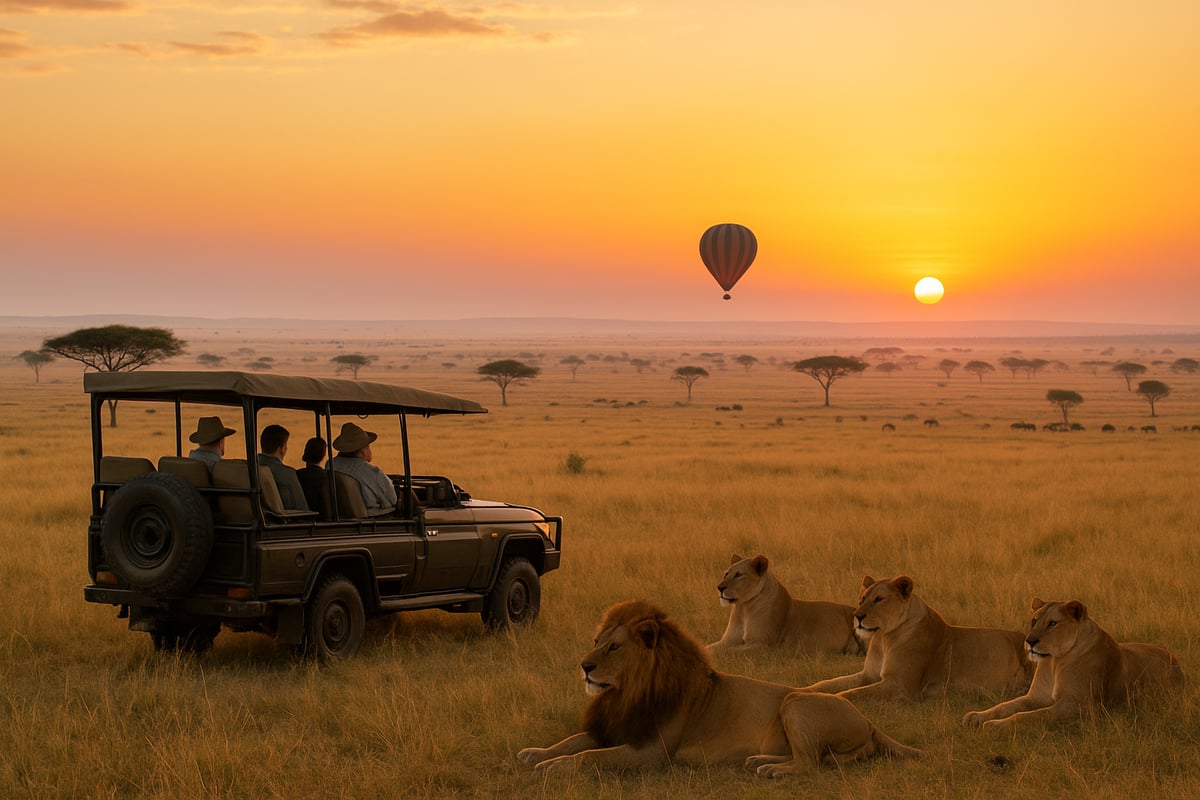
Game Drives: Classic and Off-the-Beaten-Path
Game drives are the quintessential serengeti national park africa experience, offering access to breathtaking wildlife spectacles. Morning and afternoon drives reveal predators on the hunt, while night drives uncover elusive nocturnal creatures. Visitors can choose between private safaris for tailored adventures or group tours for a sociable and budget-friendly option.
Popular routes like the Seronera Valley are famed for dense predator populations. The Grumeti River dazzles with dramatic crossings, and the Ndutu Plains are prime during migration season. For deeper insights into lion social structure, explore this resource on Understanding Lion Behavior.
Hot Air Balloon Safaris
Soaring above serengeti national park africa at dawn in a hot air balloon is a once-in-a-lifetime memory. As the sun rises, panoramic views unfold beneath you: herds of wildebeest, scattered giraffes, and the iconic acacia landscape. After landing, many operators offer a champagne breakfast in the bush.
Balloon safaris operate primarily in Central and Western Serengeti, with the dry season offering optimal conditions. Safety is prioritized by experienced pilots and reputable companies. Booking early is essential, as spots are limited and highly sought after.
Walking Safaris and Bush Walks
For those craving a closer connection with serengeti national park africa, guided walking safaris offer an intimate perspective. Accompanied by expert trackers and armed rangers, guests explore areas where vehicles cannot go, such as the Moru Kopjes or select private concessions.
Walking safaris focus on smaller wildlife, birdlife, and plant identification. Learn to read animal tracks, observe insects, and appreciate the delicate balance of the ecosystem. These experiences are ideal for adventurous travelers seeking a deeper understanding of the park’s natural rhythms.
Cultural Encounters with Maasai Communities
A visit to serengeti national park africa is incomplete without engaging with the Maasai, the region’s indigenous guardians. Organized tours to Maasai villages allow travelers to learn about traditional crafts, music, and daily life.
Guests can participate in cultural ceremonies, listen to stories, and understand the Maasai’s vital role in conservation. Responsible tourism ensures respectful interactions and supports local livelihoods. Always seek genuine, community-approved experiences for an ethical visit.
Birdwatching and Photography
Bird enthusiasts will find serengeti national park africa a paradise, boasting over 500 bird species. Notables include the striking lilac-breasted roller, secretary bird, and Africa’s largest flightless bird, the ostrich. The park’s varied habitats provide year-round birdwatching opportunities.
Photographers, both amateur and professional, can capture iconic scenes: lions at sunrise, wildebeest migrations, and vibrant avian displays. The best light is found early morning and late afternoon, so plan game drives accordingly and always respect wildlife boundaries.
Night Safaris and Special Experiences
Night safaris in serengeti national park africa reveal a hidden world of nocturnal wonders. Guided by spotlights, guests may encounter leopards on the prowl, hyenas calling, and delicate bush babies leaping between branches. Night drives are available in select private reserves and camps.
Beyond wildlife, special experiences include stargazing under unspoiled African skies, sundowner drinks with sweeping views, and bush dinners surrounded by the sounds of the wild. These unique moments add magic to any Serengeti adventure.
Planning Your Serengeti Safari: Step-by-Step Guide for 2025
Embarking on a journey to serengeti national park africa in 2025 promises an experience like no other. Careful planning is the key to making the most of this iconic destination. Use this step-by-step guide to ensure a seamless, responsible, and unforgettable safari adventure.
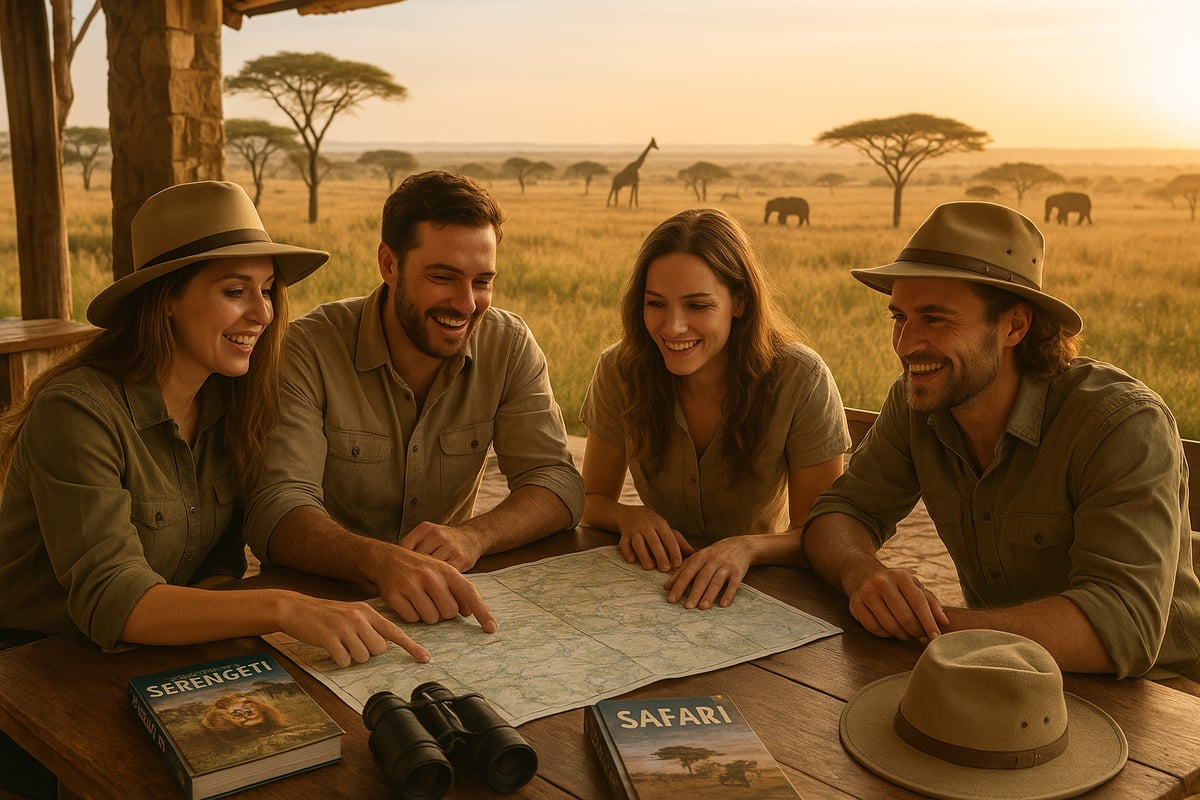
Step 1: Choosing the Right Safari Type
Selecting the ideal safari type for your serengeti national park africa adventure is the foundation of your trip. Decide between private or group safaris, and consider if self-drive or guided tours suit your style. Private safaris offer exclusivity and flexible schedules, making them perfect for families or photographers. Group tours provide social experiences and cost savings, ideal for solo travelers or friends.
Self-drive options grant independence, but require confidence with navigation. Guided tours ensure expert wildlife interpretation and safety. As you plan, remember that Serengeti National Park's 2025 Awards underscore its status as Africa’s leading safari destination, providing assurance of world-class experiences.
Step 2: Selecting Accommodation
Where you stay shapes your serengeti national park africa memories. Choose from luxury lodges with pools and gourmet dining, classic tented camps for an authentic feel, or mobile camps that follow the migration. Budget travelers can find affordable campsites or self-catering options.
Consider location carefully. Central Serengeti offers year-round wildlife, while mobile camps provide front-row seats to the Great Migration. Family suites and kid-friendly programs are available at select lodges. Book early for high season, and always check for amenities like Wi-Fi or private decks.
Step 3: Mapping Your Itinerary
Crafting your serengeti national park africa itinerary involves balancing time, interests, and logistics. Short on time? A 3-day safari covers the Seronera Valley’s wildlife hotspots. For deeper exploration, 5 or 7-day trips allow visits to the Western Corridor or Northern Lobo.
Combine serengeti national park africa with other destinations, such as the Ngorongoro Crater or Lake Manyara, for added diversity. Plan your entry and exit points, consider internal flights, and arrange transfers in advance. Sample itineraries help visualize your route and maximize sightings.
Step 4: Booking Permits, Park Fees & Logistics
To enter serengeti national park africa, you must secure permits and pay park fees. In 2025, fees vary by nationality, length of stay, and vehicle type. Book permits well in advance, especially during migration season.
Check vehicle regulations, as some areas require 4x4s. International travelers need a valid Tanzanian visa, which can often be obtained online or on arrival. Organize airport transfers, confirm internal flight schedules, and ensure you have all documents ready for a smooth arrival.
Step 5: Packing and Preparation
A successful serengeti national park africa safari starts with smart packing. Essentials include neutral-colored clothing, a wide-brimmed hat, sunglasses, and sturdy shoes. Don’t forget binoculars, extra camera batteries, and a lightweight daypack.
Health preparations are crucial. Bring prescribed medicines, insect repellent, and sunscreen. Vaccinations for yellow fever and routine travel immunizations may be required. Purchase comprehensive travel insurance covering medical evacuation. Embrace responsible travel by packing reusable water bottles and minimizing waste.
Step 6: Navigating the Park Like a Pro
Once inside serengeti national park africa, follow park rules and safety guidelines. Always maintain a safe distance from wildlife, listen to your guide, and never feed animals. Guides can offer insider tips for maximizing sightings and ensuring minimal impact on the ecosystem.
Mobile connectivity is limited, but many lodges offer charging stations and Wi-Fi in common areas. Learn basic Swahili greetings for a more immersive experience. Respect quiet hours and fellow travelers to enhance everyone’s enjoyment.
Step 7: Sustainable & Ethical Safari Choices
Protecting serengeti national park africa for future generations requires conscious choices. Support eco-friendly lodges that use solar power and minimize plastic. Choose operators with strong community ties and fair employment practices.
Participate in conservation by following Leave No Trace principles and avoiding unethical animal interactions. Purchasing local crafts supports Maasai communities. Responsible tourism ensures your visit benefits both wildlife and people, preserving the magic of the Serengeti.
Where to Stay: Best Camps, Lodges & Unique Accommodations
Finding the perfect place to stay is essential for a memorable adventure in Serengeti National Park Africa. The park offers a diverse range of accommodations, from luxurious lodges to authentic mobile camps. With options for every style and budget, you can tailor your stay to your dream safari experience.
Overview of Accommodation Types
Serengeti National Park Africa features a broad spectrum of accommodations. Visitors can choose from permanent lodges, tented camps, mobile safari camps, and public campsites. Each offers a distinct atmosphere and level of comfort.
Permanent lodges often provide hotel-style amenities, such as pools and spas. Tented camps blend classic safari romance with modern conveniences. Mobile camps move seasonally to follow the wildlife, while public campsites cater to adventurous travelers seeking a closer connection with nature.
No matter your preference, staying within serengeti national park africa lets you immerse yourself in the heart of the wilderness.
Top-Rated Luxury Lodges
For those seeking indulgence, serengeti national park africa boasts some of East Africa’s most renowned luxury lodges. Properties like Serengeti Bushtops, Singita Sasakwa, and Four Seasons Safari Lodge offer exceptional service, gourmet cuisine, and panoramic savanna views.
Signature experiences include infinity pools overlooking wildlife, private game drives, and in-room spa treatments. These lodges are designed for comfort and exclusivity, often featuring private decks and butler service. Guests enjoy seamless access to prime wildlife areas.
Luxury lodges in serengeti national park africa set the standard for unforgettable safari stays.
Authentic Tented and Mobile Camps
Tented camps provide an authentic safari ambiance with modern comforts. Many are semi-permanent, blending canvas and wood to offer both security and a sense of adventure. Mobile camps, such as Nomad Serengeti Safari Camp and &Beyond Serengeti Under Canvas, move with the migration.
Staying in a mobile camp means you can wake up near the action, especially during the Great Migration. These camps offer en-suite bathrooms, hearty meals, and intimate group sizes. It is the ideal option for travelers who want to experience the wild spirit of serengeti national park africa without sacrificing comfort.
Family-Friendly and Budget Options
Traveling as a family or on a budget is entirely possible in serengeti national park africa. Many lodges offer family suites, child-friendly activities, and safety features. Some properties even have dedicated guides for young explorers.
Budget-conscious travelers will find affordable camps and self-catering options. Public campsites provide basic facilities for those who prefer to bring their own gear. Booking early helps secure the best rates, and some camps offer special deals during low season.
With thoughtful planning, everyone can experience the magic of serengeti national park africa.
Location Matters: Choosing by Region
The region you choose within serengeti national park africa can shape your entire safari. The Central Serengeti is lively year-round, with abundant wildlife and easy access. The Western Corridor is famous for river crossings during migration, while the Northern Serengeti offers a remote, untouched wilderness.
Choosing a camp or lodge based on location ensures you are close to the experiences you value most. Whether it is predator action, birdwatching, or solitude, serengeti national park africa has a region to match every interest and style.
Booking Tips and 2025 Availability
Accommodations in serengeti national park africa are in high demand, especially during peak migration months. Booking well in advance is crucial for securing your preferred lodge or camp. Flexibility with dates and regions can help you find availability.
The park’s growing popularity is evident, as Tanzania recently welcomed over 5 million tourists in a historic year, with the Serengeti playing a central role ( Tanzania's Record Tourism in 2024 ). Review cancellation policies and consider flexible booking options for peace of mind.
With the right planning, your 2025 stay in serengeti national park africa will be both seamless and spectacular.
Responsible Travel: Conservation, Community & Sustainable Safaris
Traveling to serengeti national park africa is more than a journey to see wildlife. It is an opportunity to protect a world treasure, contribute to communities, and ensure the park's beauty endures for generations. Responsible travel means making choices that benefit both nature and people.
Conservation Initiatives in the Serengeti
Conservation is at the heart of serengeti national park africa. Dedicated anti-poaching units, rhino protection measures, and wildlife corridors help safeguard the park's biodiversity. Collaborations with NGOs and government agencies drive impactful projects.
For example, Conservation Efforts in East Africa highlight how tourism supports anti-poaching, research, and habitat restoration. These efforts have led to positive trends in populations of elephants and big cats.
Monitoring programs and ranger patrols are ongoing, ensuring the Serengeti remains a haven for its iconic species.
Engaging with Local Communities
Serengeti national park africa thrives when local communities are empowered. Community-run tourism offers authentic experiences and sustainable income.
- Maasai guides share traditional knowledge.
- Women’s cooperatives sell handmade crafts.
- Schools benefit from tourism-funded projects.
When you visit, take time to learn about Maasai culture and support local enterprises. Your choices help foster pride, conservation, and economic growth in surrounding villages.
Eco-Friendly Safari Practices
Making sustainable choices in serengeti national park africa is essential for preserving the fragile ecosystem. Choose lodges with solar energy, water recycling, or eco-certifications for your stay.
Simple actions matter:
- Carry reusable water bottles.
- Limit single-use plastics.
- Follow established safari trails.
Responsible photography, respecting wildlife distances, and minimizing noise help protect both animals and their habitats. Travelers play a direct role in reducing impact and promoting greener safaris.
Supporting Long-Term Sustainability
Tourism in serengeti national park africa is a powerful force for good when managed responsibly. Visitor fees fund anti-poaching, education, and conservation research. Many lodges and tour operators engage in reforestation and carbon offset programs.
According to Tourism's Economic Impact in Tanzania , tourism supports thousands of jobs and local businesses. Travelers can amplify this impact by volunteering, joining citizen science projects, or choosing operators committed to sustainability.
Challenges and the Future of Serengeti
Despite many successes, serengeti national park africa faces ongoing challenges. Climate change threatens migration patterns, and balancing tourism with ecosystem health is complex.
The future depends on collaboration between travelers, communities, and conservationists. By choosing responsible travel, visitors help protect the park, support adaptation efforts, and ensure the Serengeti’s magic endures for generations to come.
As you envision your journey across the Serengeti’s sweeping plains, imagine how each detail—timing your visit for the Great Migration, choosing accommodations that blend luxury with sustainability, and connecting with Maasai communities—will shape your extraordinary safari. With thoughtful planning and expert guidance, you can immerse yourself in Africa’s iconic wildlife and vibrant cultures while making a positive impact. If you’re ready to turn this vision into a seamless, responsible adventure tailored just for you, let’s take the next step together. Let's Plan Your Personal Adventure
